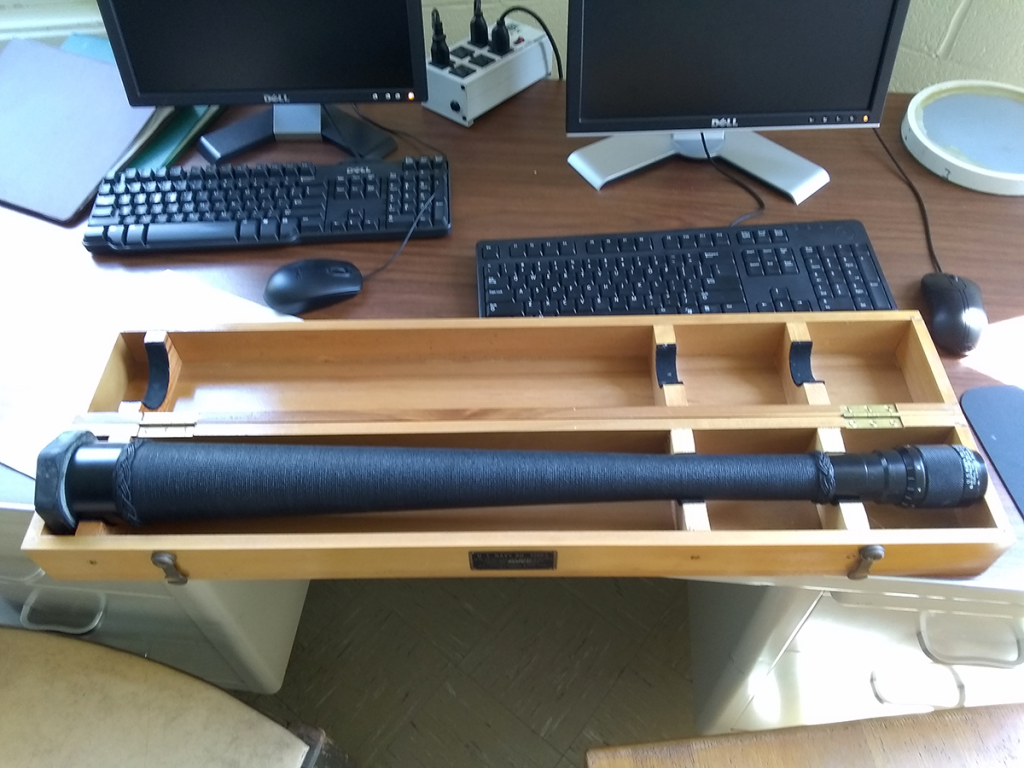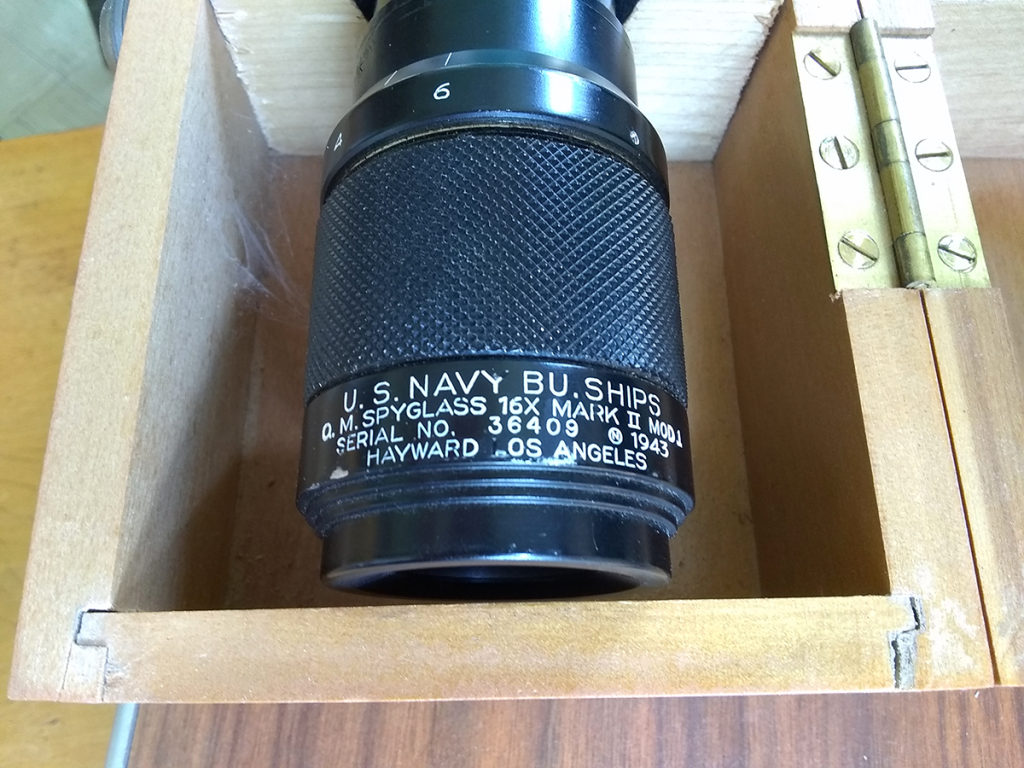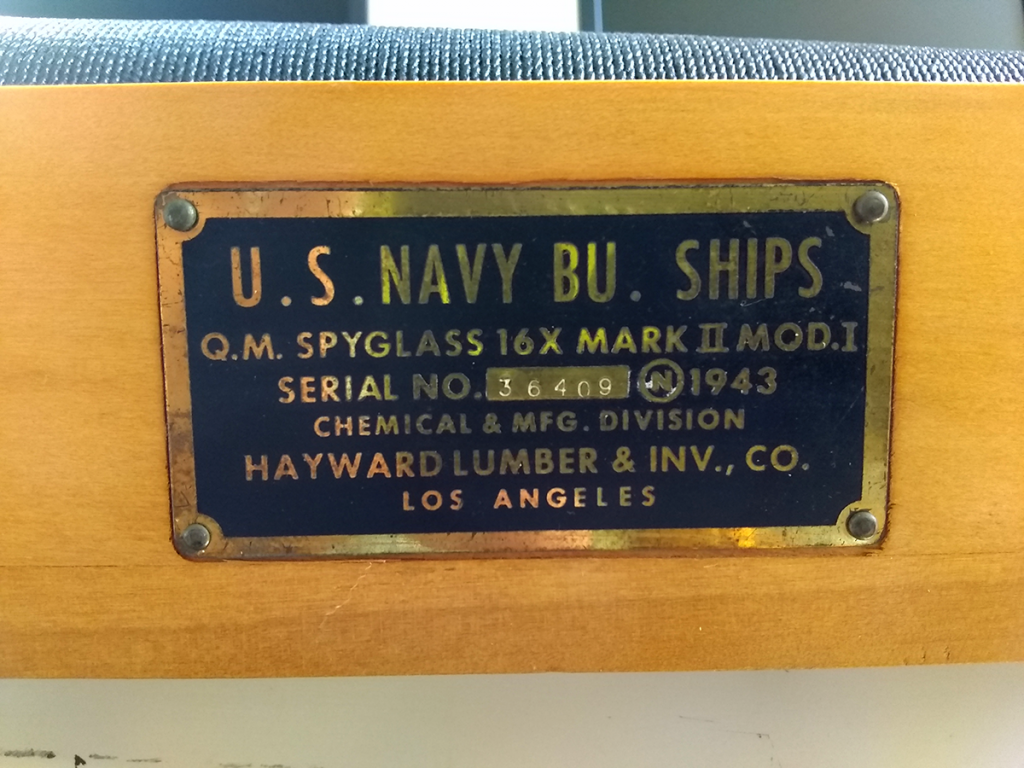
It’s not just telescopes at the Observatory. We also have a spyglass. What’s the difference?
There are a variety of potential optics for a telescope, using reflectors to reflect and focus light, using refractive lenses to bend and focus light, using mirrors to turn a beam around corners, using these in combination. Each has its pros and cons, and careful optical design and precise manufacturing work to gather lots of light, to provide good resolution and magnification, and to correct for optical aberrations.
And in doing all of that, the image reaching your eye or the camera sensor gets flipped upside down. Also in reverse, if you’ve got a mirror in your optical train. When looking at stars and deep sky objects, that’s not a big deal. “Up” is arbitrary in space. For terrestrial viewing, however, up matters. Seeing that incoming pirate ship upside down is disorienting. So a good spyglass keeps up as up.

It does so by using a Galilean refractor design, which has a concave lens in the optical assembly to avoid the upside-down flip. The resulting telescope is necessarily longer than a comparable refractor with convex lenses, and thus heavier. That weight tends to limit the possible objective aperture size, and the practical magnification limits are low. Still: very effective for spotting Edward Teach at a distance, or for identifying the four largest moons of Jupiter.
Binoculars, incidentally, manage to keep the world upright thanks to a set of prisms between the objective lenses and the eyepieces. Yet another handy trick in the optical design toolkit.
